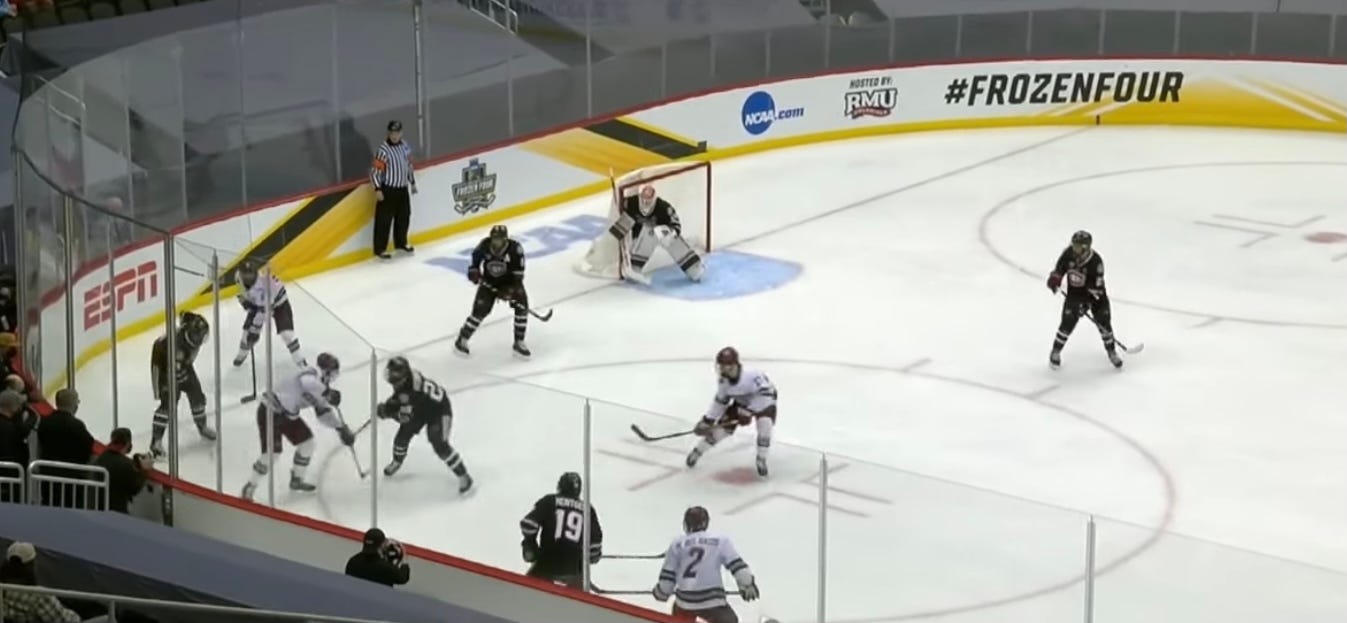We have talked a ton about being proactive and ways we can improve our performances.
A key concept with defensemen being proactive in the modern game is shorting the offensive zone
Old school = Sitting on the blueline, skating backward, and absorbing the rush
New school = Getting off the blueline, skating forward, and nipping the rush in the bud before it gets going
What is “Shorting the Zone”?
Shorting the zone = Defenseman moving their positioning lower in the offensive zone.
As we mentioned in “Team Defense: Setting the edge, the force defender” & “Why a hockey team is like a lung,” there is a defined playing area in which the play is contained.
By positioning themselves lower in the offensive zone, defensemen are able to shrink the playing area for the opposition. See the team in white below. All 5 players are easily within the screen.
Rather than standing at or near the blueline, the defenseman can be found around the top of the circles or lower.
The defensemen are always a few steps away from the action and have smaller gaps to close.
Advantages, Defense
This proactive positioning approach allows for defensemen to be involved much more quickly. The gap (distance between D & their check) can continuously be managed to their advantage.
The opposition never has a moment of free space or time to think. Here is an example from the NCAA champions, UMass. Rarely do you see their defensemen sitting and waiting at the blueline in the OZ Instead, they are getting low in the zone, especially the strong side defenseman.
You can see that the strong side defenseman moves down to the strong side winger. If that winger has a pass sent their way, they will struggle to make a good play and will be under immediate pressure.
Advantages, Offense
While the primary role of a defenseman is to stop the other team from scoring, there is a major impact they can have in scoring more goals.
Pushing down the wall allows for a defenseman to jump the play & create transition opportunities. Similar to the gegenpress in soccer.
By starting down deeper in the offensive zone, a defenseman can show off their skills to create opportunities. You can’t do this by standing on the blueline:


Nasty.
It all started by shorting the zone and giving himself room to operate.
Standing back on the blueline gives less room to operate for the defensemen. While they may feel better being in more space, that space shrinks quickly once the puck is on their stick and the opposition comes out to challenge them.
Further reading - Passing progressions for hockey players
Did you enjoy this newsletter?
Help us spread the ideas within and share it with the people you care about








